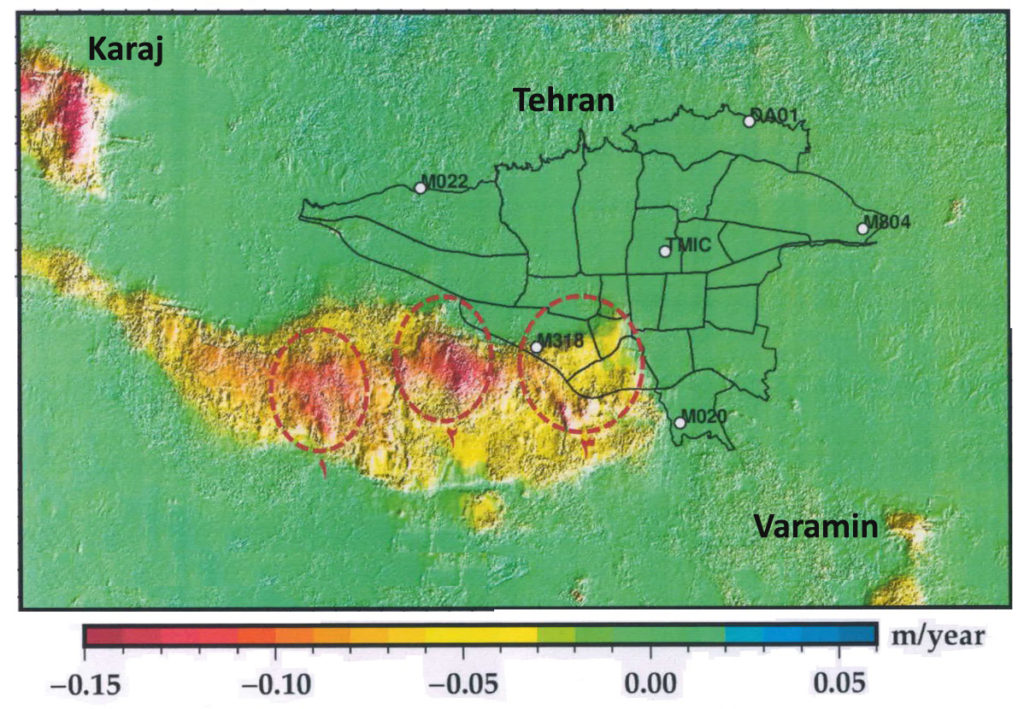One of the most important issues in Iran is the occurrence of the increasing phenomenon of subsidence and sinkholes in the plains of the country. The phenomenon of subsidence and reproductive sinkholes is due to negative balance of aquifers and excessive drop in groundwater level in plains. Obvious examples of this phenomenon can be seen in Kerman, Famenin plains of Hamadan and Tehran. Subsidence and sinkhole phenomena are complex mechanisms of hydrogeology, water resources, geology and geotechnical and are activated by synergy of multiple factors.
Studies show that during 14 years, more than 1.6 meters of subsidence in Tehran plain have been witnessed. This phenomenon, which continues creeping, is the product of unwise behavior of modernity in loading more than the carrying capacity of the land, causing extensive and irreversible damages. For example, damage to urban buildings and infrastructure (water and gas systems, transportation, etc.) as well as loss of groundwater reservoir (aquifer) can be noted.
Familiarity with the dimensions of this complex phenomenon will include entering the specialized areas of groundwater resources management in order to identify the source water balance and demand and consumption management and also, familiarity with the specialized field of hydrogeology and mechanisms of nutrition, harvesting, flow movement and changes in groundwater level. It will also require familiarity with the geology of engineering and the behavior of different formations against loading and urbanization. It also requires familiarity with the field of geotechnical and soil matrix behavior against loading dynamics. In a particular example of Tehran, familiarity with urban and civil design topics will also be needed, as one of the causes of the phenomenon of subsidence in Tehran plain is disturbing the aquifer feeding system due to subsurface construction in Shemiran heights.
The efforts made by the society over the past 20 years in this regard have all focused on identifying the problem or monitoring the phenomenon, and so far no action has been taken to solve the problem (although this issue is also one of the most complex issues on the knowledge fronts of the world).



This team will be formed in the form of one of the subgroups of “Urban Water Regeneration Scientific-research group” to start a multidisciplinary team activity by investigating the problem and trying to identify it. Members of this team, while familiarizing themselves with one of the faces of urban water issue, will practice the skills of diagnosis, explanation and analysis of the problem. Of course, solving the problem will not be one of the expected goals of this team. This activity is hand-hanging for familiarity with the land and place of living, capacity building in teamwork and multi-attributes and accepting the role of problem solver as one of the good experts of the future of the country. Activities that can be placed on the teamwork agenda in the form of this group will be as follows:
- Familiarity with the situation of Tehran plain aquifer
- Familiarity with the geological situation of Tehran and the hydrogeology of its aquifer
- Familiarity with the subsidence situation of Tehran plain and its consequences
- Trying to identify the reasons for the occurrence of subsidence phenomenon in Tehran plain
- Familiarity with the experiences or plans for management of plains subsidence
In addition to office exercises, the above-mentioned process will benefit from a series of field observations to increase the productivity of activities. The list of these field observations will be programmable and performed as follows:
- Visiting Shahriar and Varamin
- Visiting Tehran Municipality ICT Organization

